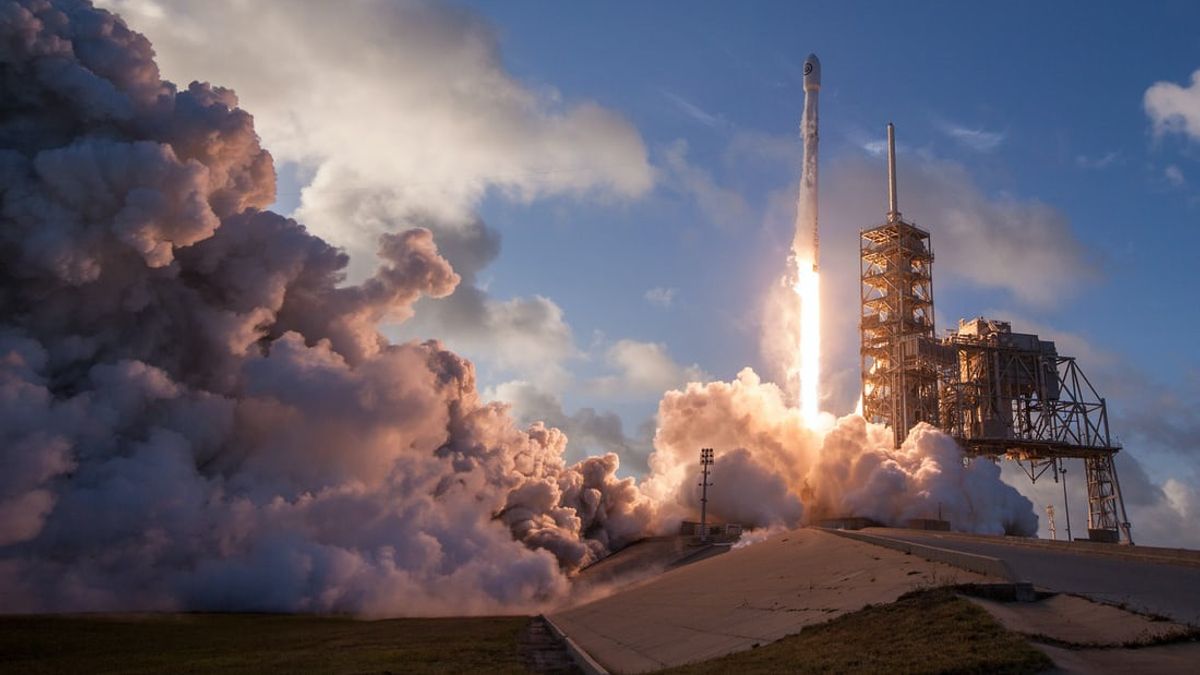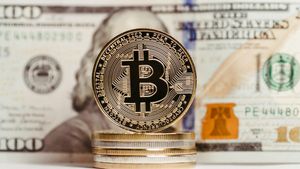JAKARTA - The spacecraft of the journey offered by several space companies has drawn strong criticism. This is based on the fact that the carbon footprint produced by the spacecraft has a negative impact on the environment.
Richard Branson recently made his journey into space this month aboard his Virgin Galactic ship, SpaceShipTwo. Jeff Bezos is set to launch a Blue Origin rocket on July 20. Elon Musk's SpaceX is planning an all-civic orbital mission in September. The nascent space tourism industry faces tough questions about its impact on the environment.
"The carbon dioxide emissions are completely negligible compared to other human activities or even commercial aviation," said NASA's chief climate advisor, Gavin Schmidt.
Quoting AFP via Japan Today, Monday, July 19, some scientists are concerned about the potential long-term harm as the industry is poised to grow enormously, especially the impact on the ozone layer in the upper atmosphere is still poorly understood.
Virgin Galactic, says its carbon emissions are almost the equivalent of a business class ticket from London to New York. In fact, the spacecraft was quite a lot of fossil fuels.
"The company has taken steps to offset carbon emissions from test flights and is examining opportunities to offset carbon emissions for future customer flights, and reduce our supply chain carbon footprint," said Virgin Galactic.
Contrary to reality, according to an analysis published by French astrophysicist Roland Lehoucq and colleagues at The Conversation, transatlantic flights carrying hundreds of people generate Virgin emissions of about 4.5 tons per passenger on flights of six passengers.
SpaceShipTwo uses a type of synthetic rubber as fuel and burns it in nitrous oxide, a powerful greenhouse gas. The fuel pumps black carbon into the upper stratosphere, as high as 30 to 50 kilometers.
These particles can have multiple impacts. Ranging from reflecting sunlight and causing a nuclear winter effect, to speeding up chemical reactions that deplete the ozone layer. Though this layer is very important to protect humans from harmful radiation.
Ironically, Virgin has said it wants to make 400 flights per year. Compared to SpaceShipTwo, Blue Origin is much cleaner. This is according to a recent paper by scientist Martin Ross, of Aerospace, which was posted in a tweet by Bezos' company on Twitter.
Blue Origin only burns liquid hydrogen and liquid oxygen, which produces water vapor. In his paper, Ross claims to find Blue Origin's reusable vertical launch rocket causes a hundred times less ozone loss and 750 times less climate force than Virgin's. But that doesn't mean Blue Origin is completely clean.
"It takes electricity to make liquid oxygen and liquid hydrogen. You can go back and calculate how much electricity was used to make the propellant. It depends how far you look back in the supply chain," explains Ross.
The impact of suborbital launches such as those carried out by Virgin and Blue Origin is nothing compared to the impact of a rocket reaching orbit. When SpaceX puts four citizens into space next September, it will use a Falcon 9 rocket, which calculations show the equivalent of 395 carbon emissions worth a transatlantic flight.
"We live in an era of climate change and starting activities that increase emissions as part of tourism activity is not the right time," said Annette Toivonen, author of Sustainable Space Tourism.
Today, the world is much more aware of the climate crisis than it was when these companies were founded in the early 2000s. It can encourage businesses to look for ways to minimize pollution through cleaner technologies to tackle the problem.
The English, Chinese, Japanese, Arabic, and French versions are automatically generated by the AI. So there may still be inaccuracies in translating, please always see Indonesian as our main language. (system supported by DigitalSiber.id)










